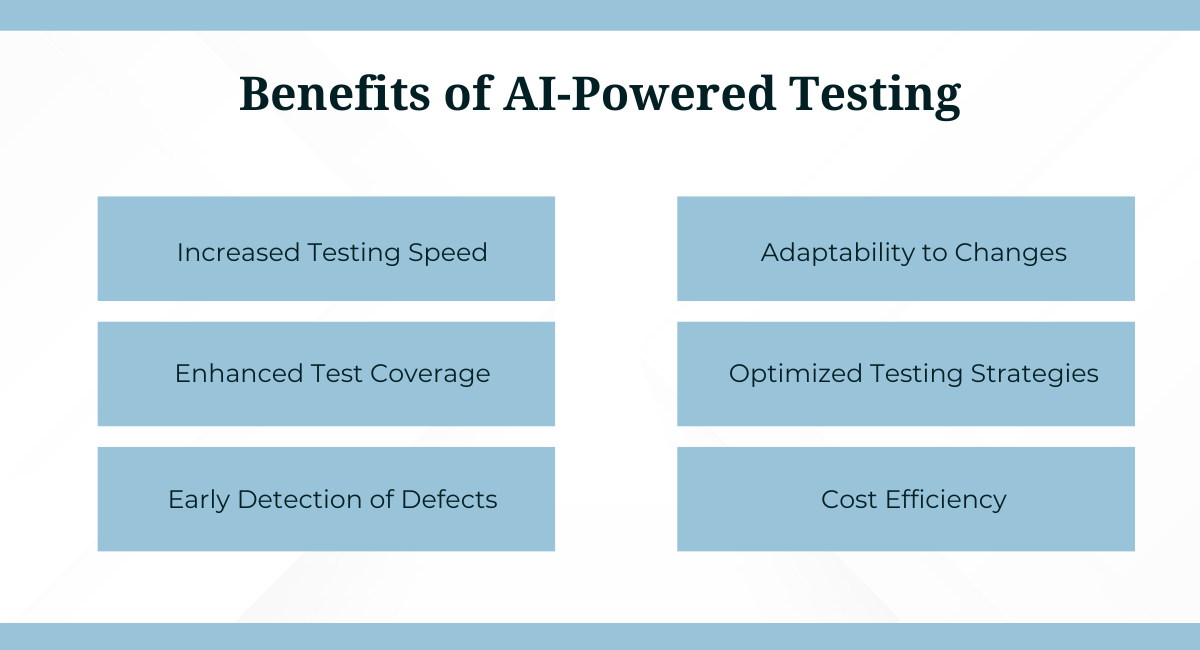In software development, ensuring the quality and reliability of applications is paramount. Traditionally, manual testing has been the bedrock of software quality assurance, but as technology continues to evolve, so does the approach to testing. Integrating Artificial Intelligence (AI) in software testing heralds a new era, promising efficiency, accuracy, and speed. In this article, we will explore the journey from manual to AI-powered testing, understanding the challenges, benefits, and the gradual shift that is reshaping the landscape of software testing.
The Manual Testing Era
Manual testing has been the cornerstone of software testing for decades. Human testers meticulously follow test cases, simulate user interactions, and validate software functionalities. While this approach has its merits, it comes with inherent limitations. The manual testing process is time-consuming, prone to human errors, and lacks scalability.
As software development cycles shrink and complexity grows, the need for a more agile and efficient testing methodology becomes evident.
The Rise of Automated Testing
Recognizing the shortcomings of manual testing, the industry pivoted towards automated testing. Automation brought about a significant improvement in testing speed and repeatability. Test scripts could be created to simulate various scenarios, reducing the testing cycle and enhancing coverage.
However, automated testing also faced challenges, particularly in dealing with dynamic and rapidly changing applications. Maintenance of test scripts and adapting them to evolving software became a bottleneck.
The Need for Intelligence in Testing
As the limitations of manual and automated testing became apparent, the industry started looking towards incorporating intelligence into the testing process. Enter Artificial Intelligence. AI-powered testing is not merely about automating repetitive tasks; it's about infusing cognitive abilities into the testing process.
AI leverages machine learning algorithms, natural language processing, and data analytics to make sense of vast amounts of data and optimize testing strategies.
Challenges on the Road to Manual to AI-Powered Testing
Transitioning from manual to AI-powered testing is not without its challenges. One of the primary hurdles is the mindset shift required among testing teams. Testers need to evolve from mere executors of test cases to collaborators with intelligent systems. Additionally, there is the challenge of data quality and availability.
AI thrives on data, and having access to relevant, diverse, and representative datasets is crucial for training effective testing models. Security concerns and the ethical use of AI in testing also pose significant challenges that need careful consideration.
The Gradual Integration Process

The journey from manual to AI-powered testing is not an abrupt leap but rather a gradual integration. Organizations often adopt a phased approach to introduce AI into their testing processes. Here are the critical steps in this transition:
Assessment and Planning:
a. Evaluate the current testing processes and identify areas where AI can bring the most value.
b. Assess the skill set of the testing team and plan for upskilling or hiring AI experts.
c. Define clear goals and objectives for integrating AI into testing.
Education and Training:
a. Provide training to testing teams on AI concepts, tools, and methodologies.
b. Foster a culture of continuous learning to keep the testing team abreast of the latest advancements in AI.
Pilot Projects:
a. Start with small-scale pilot projects to test the feasibility and effectiveness of AI-powered testing in real-world scenarios.
b. Gather feedback from testing teams and stakeholders to refine the approach.
Tool Integration:
a. Identify and integrate AI-powered testing tools that align with the organization's goals.
b. Ensure seamless compatibility with existing testing frameworks and processes.
Collaboration Between Humans and AI:
a. Encourage collaboration between human testers and AI systems.
b. Leverage AI for tasks that require speed and scalability, allowing human testers to focus on complex scenarios that require intuition and creativity.
Continuous Monitoring and Improvement:
a. Implement mechanisms for continuous monitoring and evaluation of AI models.
b. Iterate and improve the models based on real-world testing experiences and feedback.
Benefits of AI-Powered Testing

- Increased Testing Speed: AI can execute tests at a much faster pace than manual testing, significantly reducing testing cycles.
- Enhanced Test Coverage: AI can analyze vast datasets and identify patterns to improve test coverage, ensuring a more comprehensive evaluation of the software.
- Early Detection of Defects: AI-powered testing can identify potential defects early in the development process, leading to quicker resolution and cost savings.
- Adaptability to Changes: AI models can adapt to changes in the software, reducing the maintenance overhead associated with traditional automated testing.
- Optimized Testing Strategies: AI can analyze historical data to optimize testing strategies, prioritizing tests based on their likelihood of uncovering critical defects.
- Cost Efficiency: While the initial investment in AI-powered testing may be substantial, the long-term benefits include cost savings through increased efficiency and reduced time-to-market.
Smarter Path
The evolution from manual to AI-powered testing represents a paradigm shift in software quality assurance. While manual testing and automated testing have served their purpose, the integration of AI brings unprecedented efficiency, accuracy, and adaptability to the testing process.
The gradual path to more intelligent software testing involves the following:
- A strategic approach.
- Collaboration between human testers and AI systems.
- A commitment to continuous improvement.
As organizations embrace the capabilities of AI, they are poised to revolutionize their testing practices and deliver higher-quality software in an increasingly competitive landscape. The future of software testing is undeniably intelligent, and the journey from manual to AI-powered testing is a transformative step toward that future.
You may also be interested in About Us | ContextQA
Book a Demo and experience ContextQA testing tool in action with a complimentary, no-obligation session tailored to your business needs.
We make it easy to get started with the ContextQA tool: Start Free Trial.
